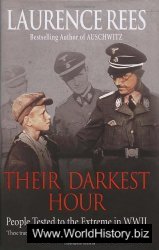Despite the difficulties, the Atlantic coast area from Labrador to Georgia developed into a complex network of tribes. Almost all now grew corn and squash. In Delaware and New Jersey, the Lenni or Lenape (Real or Original People) were typical in this respect, having taken up the cultivation of corn around 1000 ce.32 The sturgeon of the Delaware River could reach 4 meters or more in length and was an important food source. Much like other tribes in woodland areas, the Lenape lived in structures called wigwasigamig, which was shortened by European settlers to wigwams (which means, “their house”), a domed single room.33 These “wigwams” consisted of sturdy arched frames made of wooden poles that were covered with hides or other materials suitable for roofing. Details of construction vary with the local tradition and availability of materials. Some of the roofing materials include grass, brush, bark, rushes, mats, reeds, hides, or cloth. A large wigwasigamig could hold several families. Although usually built to last only one season, they were very sturdy and when the first Europeans encountered them, they were struck by how warm and cozy they were inside in comparison to their drafty and wet homes back in England.
First, a circle of about 4 or 5 meters in diameter was drawn on the ground. The bent saplings were then placed over the circle, using the tallest saplings in the middle and the shorter ones on the outside. The result was a set of parallel arches. Another set of saplings was used horizontally to wrap around the wigwam. When the two sets of saplings were finally tied together, the sides and roof were placed on it. The siding of the wigwam usually consisted of tree bark. Animal felts placed over the top provided weather-proofing if needed. In the summer, families spanning several generations would live together in these. The women were organized under the leadership of one matron chief. The longhouse was similar in construction to the wigwam, but made on a bigger scale.
The Lenape believed that The Great Spirit created the quarters of the earth, where the winds come from, and that the Sun and the Moon were brothers. The role of the two brothers was to provide light during the day and night. Thunder also was a winged, manlike being who created water drops and protected the people against the Great Horned Serpents and water monsters. The Corn Spirit ruled over vegetation and agriculture. Finally, it was Mother Earth’s task to take care of and feed the people. The latter anxiously watched the cosmos for certain celestial signs and the positions of stars and phases of the moon, and they arranged their activities according to these signs. There was, for example, “The Big House Ceremony,” when thanks were given to the Great Spirit and the demigods. The event was marked by the constellation of the Great Bear, known to us as the Big Dipper, as he is chased and finally caught by three hunters. The four main stars of the quadrangular figure formed the body of the bear, the stars of the handle represented war hunters. The little star, Alcor, behind the second hunter was a dog. Every year in October, when the leaves turned red, the bear was overtaken and killed and his blood was perceived as reddening the forest leaves.
The Big House building in which the ceremony took place stood as a metaphor for the tribe’s conception of the universe. The four walls were the four quarters of the earth created by the Great Spirit or Creator. The arched ceiling was the sky where the Creator resides. The floor represented the earth where the three divisions of people (Turkey, Turtle, and Wolf) live. Under the house is the realm of the underworld. The door to the east allows the sunrise, symbolizing a new beginning, to shine in. The door to the west, where the sunset can be viewed, symbolizes termination. The center pole of the house is the stafi' of the Great Spirit, upon which he rests his right hand. This connection to the Creator symbolized the maintenance of life, and the protection and guidance under which the Lenape live. The Tortoise, upon whose back sprouted the ancestral tree from whose branches man grew, moves across the earth with a measured pace. He passes through the Big House from east to west. Thus the Tortoise symbolically brings the ceremony in from the east and exits by way of the west door. At celebrations, a tortoise shell was passed around as each person recounted their visions. During the orations, there were pauses for drum beats and singing. Between speeches, ritual dances were performed and prayers were ofiered with the help of prayer sticks that were lifl:ed to the twelfth level of heaven. Many decorated their faces with yellow paint in patterns similar to those found on a tortoise shell.
On the floor of the Big House there is an oval dancing path, symbolizing the Milky Way, or the White Path of Life. The White Path is the route of life along which man proceeds, heading west, where life ends and his spirit continues on along the Milky Way to the Spirit World. While the spirit leaves the body at the time of death, it does not depart immediately but hovers nearby for eleven days eating the ofierings his loved ones have placed on the grave. On the twelfth day, the spirit travels to the Twelfth Heaven. Here life continues much like life on earth, only without disease, pain, or sufiering. There is no sun, but a brighter light created by the Great Spirit. The newly minted spirit is reunited with relatives and friends—everything is provided for by the Creator. 33




 World History
World History









